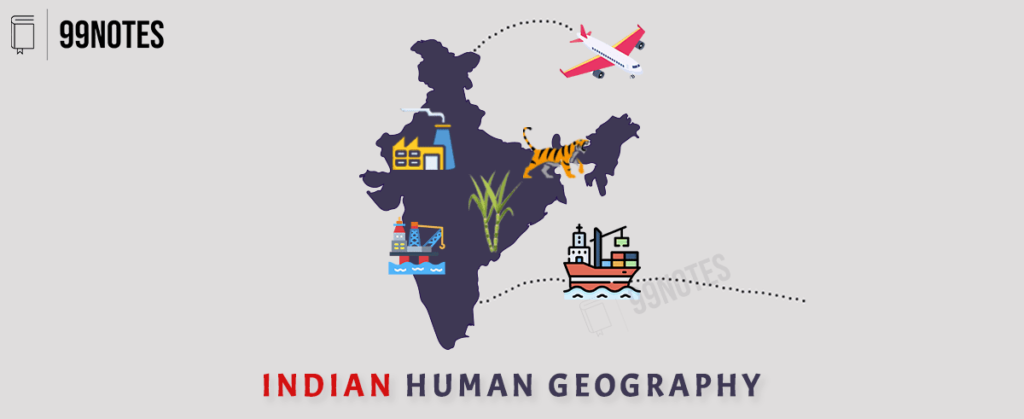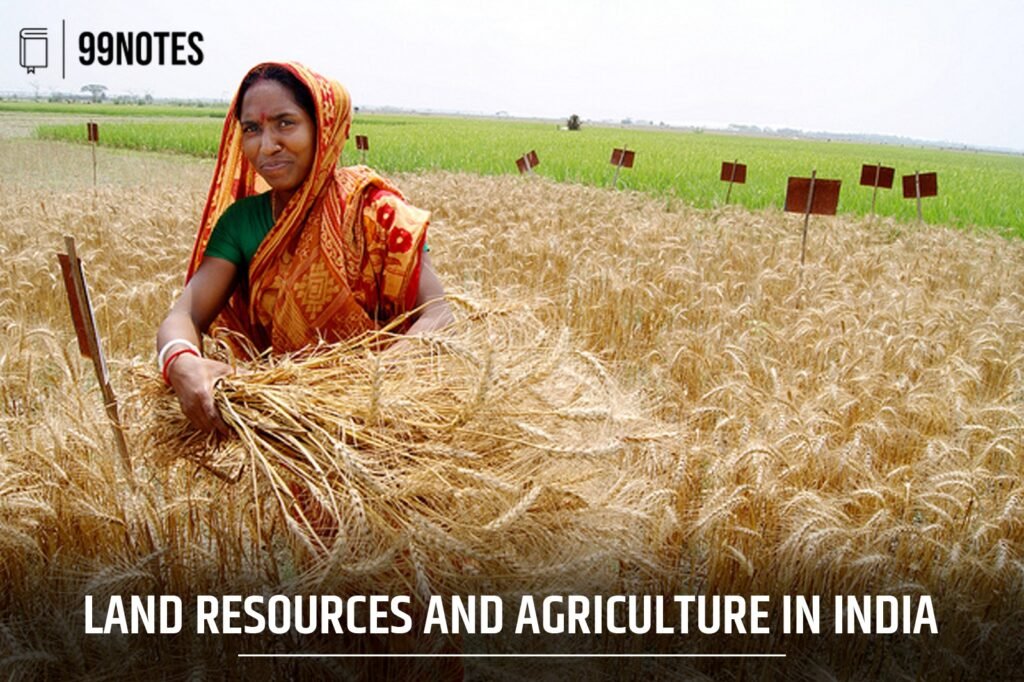
Indian Human Geography Notes for UPSC Free Download

Population
Understanding the patterns of population distribution is one of the key areas of study in Human geography. In this chapter, we shall study the basics of Population dynamics and then in the later chapters we shall study the impact of migration

Human Migration
Human migration is the movement of people from one place to another, intending to settle, permanently or temporarily, at a new location (geographic region). The person who migrates is known as the Migrant. It has a big impact on the population

Human Settlements
The human population is highly concentrated in the world. About 90% of the world’s population lives in just 10% of the area. 10 most populous countries contribute 60% to the world’s population.

Human Development
Human development is a process of enlarging the range of people’s choices, increasing their opportunities for education, health care, income and empowerment and covering the full range of human choice

Human activities
Human activities which generate income are known as economic activities. Grouped into primary, secondary, tertiary and quaternary groups. Primary activities refer to utilisation of earth’s resources

Land Resources and Agriculture in India
In nature, land exists as forests, deserts, wetlands or waterbodies (including glaciers), as we have learnt in the Physical Geography book. Humans put this land to a variety of uses

Mineral and Energy Resources
In geography, a resource is any material that humans value and need, and that can be used to satisfy our needs. Resources Depending based on the state of development, can be classified

Manufacturing Industries
In India, the share of manufacturing in the country’s GDP is not Uttar Pradesh to the global mark. The share of manufacturing-sector in GDP is stagnated at 17% (out of 27% of industry including 10% of mining

Tertiary and Quaternary Activities
These are quasi-urban centres that serve as trading centres of the most rudimentary type. [Here one must recall that urban] Personal and professional services are not well-developed. These form local collecting and distributing centres.

Transport and communication
Transport is a service or facility for the carriage of persons and goods from one place to the other. In this chapter, we shall study the transports classified into land-based, sea-based and air-based systems. Initially humans carried, then animals

COMMUNICATION
Communication in geography refers to the process by which people, groups, or regions exchange information, ideas, or messages across different spatial areas. This can involve face-to-face interaction, written messages
Indian Human Geography
Indian human geography is an important topic for the UPSC CSE, as it provides insight into the social, economic, and cultural factors that shape the country.
A basic understanding of these factors can help you to better understand and analyze the issues that you will encounter in the civil service exam.
Topics of Indian human geography for UPSC CSE:
- Population and demographics: India is the second most populous country in the world, with a population of over 1.4 billion people. Understanding the distribution and characteristics of the population, including factors such as age structure, gender, and migration patterns, can help you to understand the social, economic, and political issues that are important to different communities.
- Economic development: India is a rapidly developing country with a diverse and rapidly growing economy. Understanding the structure of the economy, including sectors such as agriculture, industry, and services, can help you to understand the economic challenges and opportunities that different regions face.
- Cultural practices and traditions: India is a diverse and culturally rich country, with a wide range of practices and traditions that shape the way that people live and interact with one another. Understanding these practices and traditions can help you to understand the diversity of Indian society and the ways in which culture shapes social, economic, and political systems.
- Urbanization: India is undergoing rapid urbanization, with a large and growing urban population. Understanding the patterns and impacts of urbanization can help you to understand the social, economic, and environmental issues that are relevant to cities and urban areas.
One of the main areas of study within Indian human geography is population and demographics. India is the second most populous country in the world, with a population of over 1.4 billion people.
The population is highly diverse, with a wide range of linguistic, religious, and cultural groups. Understanding the distribution and characteristics of the population, including factors such as size, age structure, gender, and migration patterns, can help to understand the social, economic, and political issues that are important to different communities. For example, India has a large and rapidly growing youth population, which is expected to have significant implications for the country’s social and economic development.
Another important area of study within Indian human geography is economic development. India is a rapidly developing country with a diverse and rapidly growing economy. The economy is driven by a number of sectors, including agriculture, industry, and services, and it is characterized by a wide range of economic challenges and opportunities. Understanding the structure of the economy, including the main sectors and the factors that drive economic growth, can help to understand the economic challenges and opportunities that different regions face. For example, India has a large and rapidly growing service sector, which is driving economic growth in many parts of the country. However, the country also faces challenges such as income inequality and a lack of infrastructure in many rural areas.
Cultural practices and traditions are also a key area of study within Indian human geography. India is a diverse and culturally rich country, with a wide range of practices and traditions that shape the way that people live and interact with one another.
These practices and traditions are influenced by a range of factors, including religion, language, gender roles, and family structure, and they can have a significant impact on social, economic, and political systems. Understanding these practices and traditions can help to understand the diversity of Indian society and the ways in which culture shapes social, economic, and political systems. For example, India has a complex caste system that has a significant impact on social and economic mobility.
Finally, urbanization is also an important area of study within Indian human geography. India is undergoing rapid urbanization, with a large and growing urban population. This process is accompanied by a range of social, economic, and environmental changes, and it has significant implications for the country’s development. Understanding the patterns and impacts of urbanization can help to understand the social, economic, and environmental issues that are relevant to cities and urban areas and the measures that are being taken to address these issues. For example, India’s major cities are facing challenges such as congestion, air pollution, and a lack of affordable housing.
Overall, studying Indian human geography can provide a broad understanding of the social, economic, and cultural factors that shape the country and the ways in which these factors affect

